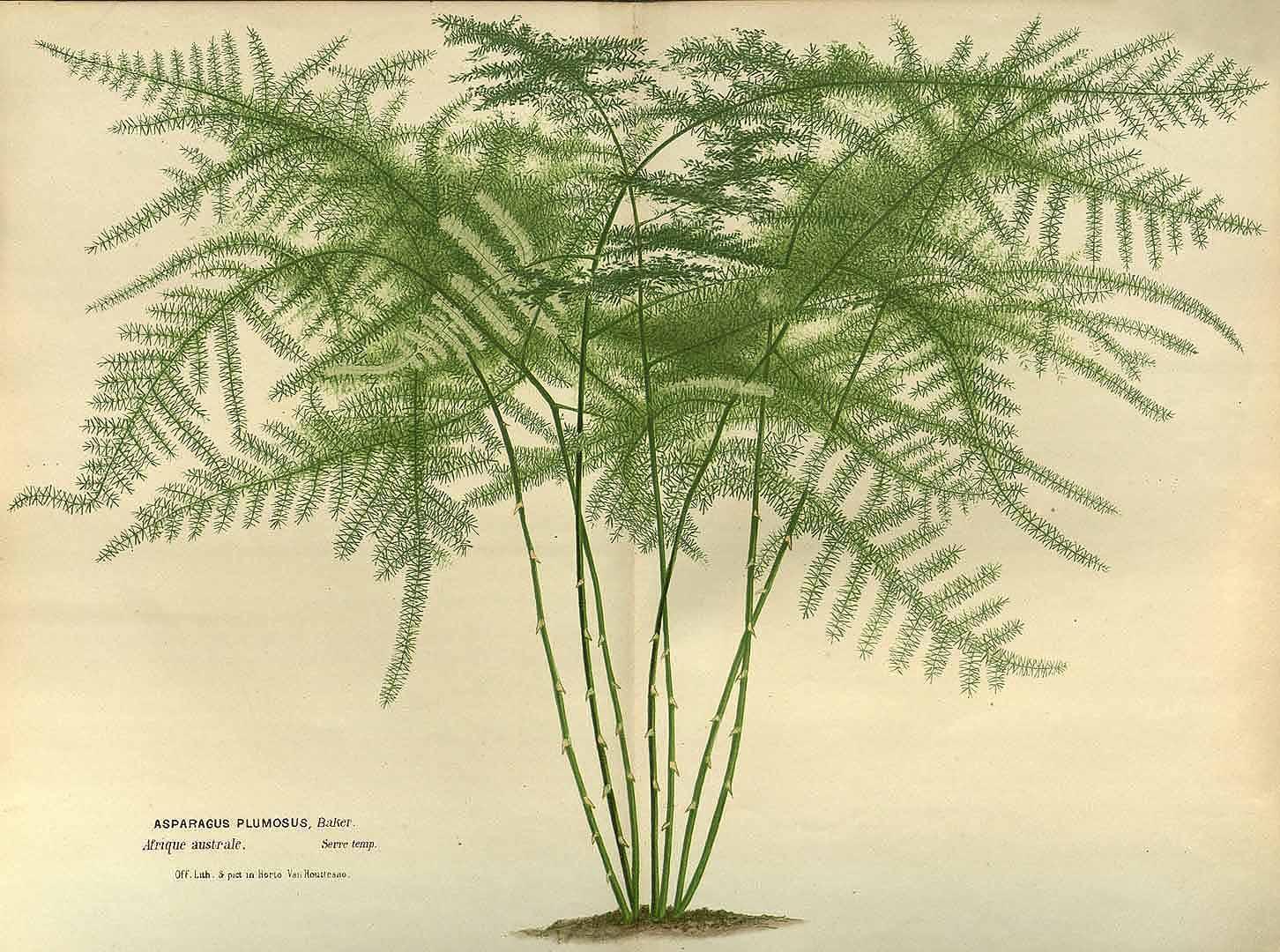Asparagus setaceus (Kunth) Jessop
AsparagaceaeAsparagus es el nombre latino de la esparraguera, que a su vez procede del griego sparassein, “rasgar”. El específico setaceus, del latín, hace referencia al aspecto fino, como una crin o un pelo, de sus hojas. Es una planta típicamente ornamental y de sombra originaria de Sudáfrica emparentada con el espárrago común (asparagus officinalis), especie esta que se ha cultivado como hortaliza para el consumo de sus vástagos jóvenes, además se usó como planta medicinal. Varias especies silvestres de asparagus, en concreto los espárragos trigueros, se recogen en la región mediterránea con el mismo fin. También se cultiva en macetas del Real Alcázar asparagus densiflorus. Francisco Hernández (1517-1587), erudito humanista y médico del rey Felipe II, registró una esparraguera fina en México por sus propiedades astringentes. Hernández dirigió una importante expedición a América destinada a investigar las propiedades medicinales de las plantas del Nuevo Mundo. Debía escribir una relación de los vegetales de uso medicinal y tenía que informar sobre la forma de cultivarlos. A su vez, Hernández tenía que enviar a la Península Ibérica aquellas plantas novedosas que no existieran, además de redactar una Historia natural sobre ese territorio. Esta expedición, nacida de la voluntad de Felipe II de conocer y explotar los recursos de sus dominios, puede considerarse como la primera que, con carácter científico, se realiza en América, prólogo de las que en el siglo XVIII y al hilo de la Ilustración financiarán los monarcas borbones.
Procedencia
AfricanoCalendario
Hábitat
Morfología
 Enredadera
Enredadera
 Extendida
Extendida
 Bipinnada
Bipinnada
 Acicular
Acicular
 Lineal
Lineal
 Alterna
Alterna
 Entero
Entero
 Cuneada
Cuneada
 Agudo
Agudo
 Perenne
Perenne
